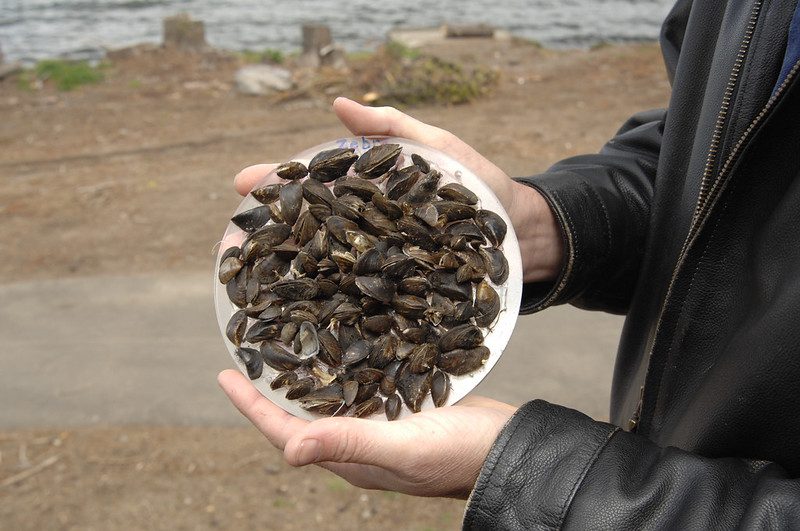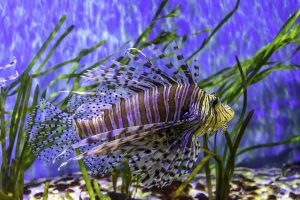Lionfish, tiger mosquitoes, and zebra mussels, oh my!
Invasive species are one of the five main reasons for biodiversity loss, along with climate change, overexploitation, pollution, and habitat loss. They have caused 42% of endangered and threatened species to be at risk of extinction.
More than 50,000 non-native species have been introduced in the United States, but many introduced species either can’t survive in their new habitat or are harmless to their surrounding ecosystems. But what about the nonnative species that do survive? What makes nonnative species so harmful to the biodiversity of the ecosystems where they are introduced?

Characteristics of Invasive Species that are Bad for Biodiversity
Some characteristics of invasive species that increase their likelihood to impact the biodiversity of an area include:
- Their ability to reproduce or grow quickly, which means their population can increase in size significantly faster than the population of native species, taking over the ecosystem.
- They outcompete native species for resources making it harder for the native species to find food, shelter, and clean water for survival.
- Invasive species can be unexpected predators in their new ecosystems, which can cause a sharp decline in the populations of native species because they haven’t evolved to know that the invasive species are a threat.
- Invasive species are also generalist species and can survive in a variety of different conditions, whereas many native are specialists. Specialists require specific diets or climates for survival and have a hard time adjusting to environmental changes that invasives cause.
Invasives are Especially Bad for Endemic Species
Invasive species have a devastating impact on biodiversity but especially on endemic species because they are the most vulnerable during any ecosystem change. Endemic species are those that are confined to a specific area. Invasive species, which are introduced either accidentally or purposely by humans, cause immense changes to food webs and disrupt habitats, reducing biodiversity. For example, a recent study showcased how an invasive lake trout caused other species to feed on different prey. This change impacted the food chain and caused the loss of the top native predator, the bull trout, which is currently listed as threatened on the engaged species list.
Examples Of Invasive Species Affecting Biodiversity
Lionfish
Lionfish might have made their way to the Atlantic Ocean from household aquariums. They prey on the young of many native species. The lionfish population will continue to grow in the Atlantic because they have few natural predators. This will cause populations of other native species to drop, “a single lionfish residing on a coral reef can reduce recruitment of native reef fish by 79 percent.” Lionfish can also impact the commercial fishing industry, causing fish species like grouper and snapper to decline.
Asian Tiger Mosquito
The Asian tiger mosquito traveled to the United States on ships containing used tires. They can survive in a range of climates, which has allowed their population to spread to 20 states. Tiger mosquitoes are vectors for a lot of diseases including West Nile virus, yellow fever, and they also cause heartworm disease in dogs. They outcompete other species of mosquitoes who may not be carriers of as many diseases.
Zebra Mussels
Zebra mussels came to the Great Lakes from the ballast water in ships. They reproduce quickly and are extremely efficient at filtering water, outcompeting native mussel species for food. They bioaccumulate pollutants at a rapid pace as they filter water, which in addition to their growing abundance causes pollutants to biomagnify as they move up the food chain, impacting predators. Scientists have linked the zebra mussel and quagga mussel, another invasive species, to avian botulism outbreaks which caused the death of many birds in the Great Lakes.
Invasive Species That Have Caused Extinction
The total impacts on biodiversity loss for the lionfish, tiger mosquito, and zebra mussel are not fully understood. But there are examples of invasive species that have a direct link to the extinction of species.
Rosy Wolf Snail
For example, the rosy-wolf snail was introduced to some Pacific islands to control populations of giant African snails, but instead they preyed on smaller endemic species of snails and slugs, driving some species to extinction.
Cats Causing Extinction
Cats are linked to the extinction of the New Zealand flightless bird, the Llyall’s wren. This endemic bird to Stephen’s Island didn’t have any mammalian predators prior to the arrival of cats, and couldn’t evolve quick enough to survive.
 Brown Tree Snake
Brown Tree Snake
The Papua New Guinea brown tree snake was introduced to Guam during World War II by accident, causing nine native bird species to go extinct because snakes were not natural predators in their habitat.
Global Biodiversity Loss Statistics
A recent study warned that a 20-30% increase in invasive species could lead to an immense loss of biodiversity globally. Biodiversity is invaluable to ecosystems and to humans. Not only do habitats that are rich in biodiversity provide ecological services like water purification and nutrient cycling, but biodiversity could also hold the key to treating new diseases.
How can we protect biodiversity from threats like invasive species? Check out the World of 8 Billion student video contest where students create a one minute video and share sustainable solutions to mitigate the impact of invasive species on biodiversity.
Image credits: Zebra mussels (Zebra mussels in Oregon by the US Department of Agriculture is public domain); Lionfish (Volitan Lionfish by Charles Patrick Ewing is licensed under CC BY 2.0); USDA specialist captures invasive brown tree snake (Brown tree snake by the US Department of Agriculture is licensed under CC BY 2.0)



